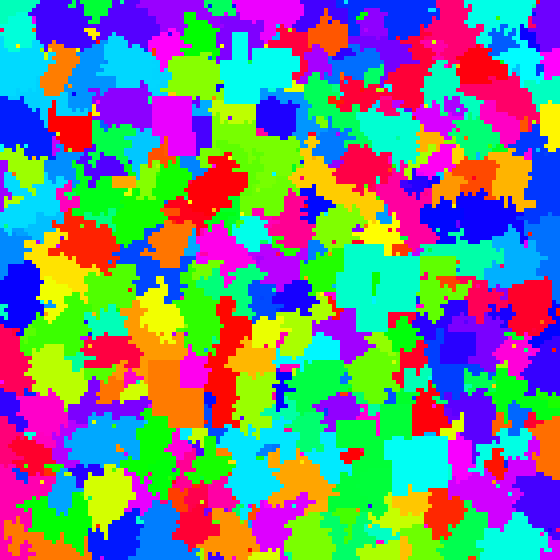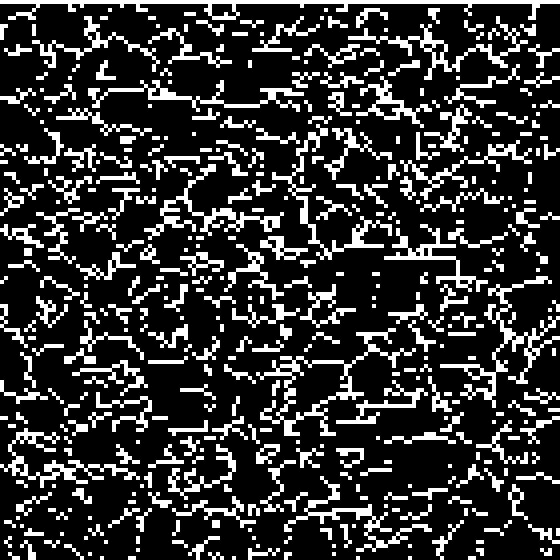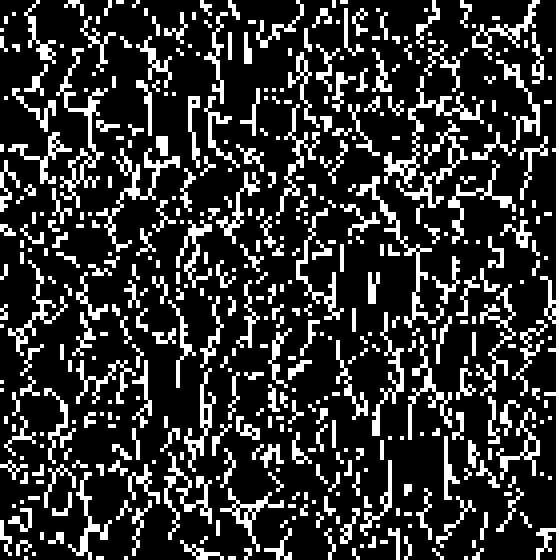Source: Day 12: Garden Groups
Full solution for today (spoilers!).
Part 1
Given a
Gridof regions, calculate the sum of the productperimeter * areafor each region.
Okay, we can load it as a Grid, but we’re going to need two new bits of code to actually get the regions.
First, the code that will scan across the input and for each (unassigned) point, find all connected points to it (and mark them all as assigned so we get each region once):
#[aoc_generator(day12)]
fn parse(input: &str) -> Grid<char> {
Grid::read(input, &|c| c)
}
pub fn get_regions<T>(input: &Grid<T>) -> Vec<(&T, Vec<Point>)>
where
T: Clone + Default + PartialEq,
{
let mut assigned_regions = Grid::new(input.width, input.height);
let mut regions = vec![];
// Calculate the points in each region
for x in 0..(input.width) {
for y in 0..(input.height) {
let p: Point = (x, y).into();
if assigned_regions.get(p).is_some_and(|v| *v) {
continue;
}
let c = input.get(p).unwrap();
let region = input.flood_fill(p);
for p in region.iter() {
assigned_regions.set(*p, true);
}
regions.push((c, region));
}
}
regions
}
That of course requires we extend Grid with flood_fill:
impl<T> Grid<T>
where
T: PartialEq + Clone + Default,
{
pub fn flood_fill(&self, p: impl Into<Point>) -> Vec<Point> {
let p = p.into();
if !self.in_bounds(p) {
return Vec::new();
}
let target = self.data[self.index(&p)].clone();
let mut stack = vec![p];
let mut visited = vec![false; self.data.len()];
let mut result = Vec::new();
while let Some(p) = stack.pop() {
if !self.in_bounds(p) {
continue;
}
if self.get(p) != Some(&target) {
continue;
}
let index = self.index(&p);
if visited[index] {
continue;
}
visited[index] = true;
result.push(p);
stack.push(p + Point::new(1, 0));
stack.push(p + Point::new(-1, 0));
stack.push(p + Point::new(0, 1));
stack.push(p + Point::new(0, -1));
}
result
}
}
It’s a different block, since this does require the T to be PartialEq where most of the impl<T> Grid<T> does not. It’s really neat how Rust templated impl can have different requirements. So you can use this method if you are PartialEq, but you don’t need to be PartialEq to just .get or .set.
Once we have that, we know enough to solve the problem:
#[aoc(day12, part1, v1)]
fn part1_v1(input: &Grid<char>) -> usize {
let regions = get_regions(input);
// For each region, find the perimeter, area, and then the score
regions
.iter()
.map(|(&c, region)| {
// For each point, each neighbor which doesn't match is an edge
// Score is area times this perimeter
region.len()
* region
.iter()
.map(|p| {
p.neighbors()
.iter()
.map(|n| {
if let Some(&v) = input.get(*n) {
if v == c {
0
} else {
1
}
} else {
1
}
})
.sum::<usize>()
})
.sum::<usize>()
})
.sum::<usize>()
}
That nested a bit more than I’d like. The innermost block p.neighbors() is doing perimeter detection: for each neighbor of a point, if it’s different, that’s 1 unit on the perimeter.
cargo aoc --day 12 --part 1
AOC 2024
Day 12 - Part 1 - v1 : 1450816
generator: 43.125µs,
runner: 910.625µs
In case you are curious (I was!) the regions look like this:

We’ve got both some really big ones and a few tiny little islands. We do also have to deal with regions completely contained within another region.
Part 2
Instead of the perimeter, count the number of edges.
I’ve got a sneaky way to do this one:
#[aoc(day12, part2, edge_detection)]
fn part2_edge_detection(input: &Grid<char>) -> usize {
let regions = get_regions(input);
// For each region, find the number of edges, area, and then the score
regions
.iter()
.map(|(&c, region)| {
// Edges in this version run along the border of the region
// Score is area times number of edges
region.len()
* Direction::all()
.iter()
.map(|&direction| {
// Run edge detection in each direction once per region
// This will create a new grid that is true for edges in that direction
let mut edges = Grid::new(input.width, input.height);
region.iter().for_each(|p| {
if input.get(*p + direction).is_none_or(|&v| v != c) {
edges.set(*p, true);
}
});
// For edges in that direction, identify 'regions'
// Each of those is a single contiguous edge
get_regions(&edges).iter().filter(|(&c, _)| c).count()
})
.sum::<usize>()
})
.sum::<usize>()
}
We’re going to actually re-use and duplicate the region detection for edges! If we make a grid that is true for all points that are an ‘up’ edge then the number of regions is exactly equal to the number of up edges total!
Here’s a graphic showing the up/down edges:

And the left/right edges:

It’s somewhat slower, since we’re calculating the edges for each region as it’s own Grid. I expect I could optimize that, but for the moment, we need each edges because it’s multiplied by each area.
$ cargo aoc --day 12 --part 2
AOC 2024
Day 12 - Part 2 - edge_detection : 865662
generator: 63.959µs,
runner: 608.089958ms
Optimization 1: Detect corners instead of edges
Okay, that’s kind of expensive. Here’s a fun math trick: polygons have the same number of sides and edges. So what’s a corner?
Either this:
*x
xC
Where C is the corner of the region, x is anything that’s not C (including out of bounds), and * can be anything (including C–in that case we’ll have two corners).
Or this:
xC
CC
With the same conditions.
#[aoc(day12, part2, corners)]
fn part2_corners(input: &Grid<char>) -> usize {
let regions = get_regions(input);
// For each region, find the number of edges, area, and then the score
regions
.iter()
.map(|(_, region)| {
// There are an equal number of edges and corners
// Each corner is either:
// *x
// xC where each x is anything not C and * can be C or not
// or
// xC
// CC
region.len()
* region
.iter()
.map(|p| {
let me = input.get(*p);
let mut count = 0;
for xd in [-1, 1].iter() {
for yd in [-1, 1].iter() {
// *x
// xC case
// Along the x and y directions match
let neighbor_xd = input.get(*p + Point::new(*xd, 0));
let neighbor_yd = input.get(*p + Point::new(0, *yd));
if me != neighbor_xd && me != neighbor_yd {
count += 1;
}
// xC
// CC case
let neighbor_both = input.get(*p + Point::new(*xd, *yd));
if me == neighbor_xd && me == neighbor_yd && me != neighbor_both {
count += 1;
}
}
}
count
})
.sum::<usize>()
})
.sum::<usize>()
}
It’s a bit longer, but I think fairly elegant with the comments. One neat trick is that since I keep me as an Option<c>, we get the border checks (which return None) for free. So we loop in the 4 directions (top left, top right, bottom left, bottom right) and check those two cases, counting how many are corners and… we’re done!
$ cargo aoc --day 12 --part 2
AOC 2024
Day 12 - Part 2 - edge_detection : 865662
generator: 63.959µs,
runner: 608.089958ms
Day 12 - Part 2 - corners : 865662
generator: 56.583µs,
runner: 1.282333ms
That is bonkers faster. 600x.
I think the other algorithm is sneakier (edge detection! re-using ‘regions’ to define edges!), but I like the edges = corners of this one and–when in a programming challenge–it’s good to find code that is both fast and elegant.
Heck, I expect this could be done while doing the floodfill to gain even more of a buff… but I think ~1ms is pretty good for now.
Benchmarks
$ cargo aoc bench --day 12
Day12 - Part1/v1 time: [827.45 µs 829.68 µs 832.26 µs]
Day12 - Part2/edge_detection time: [607.70 ms 615.13 ms 626.18 ms]
Day12 - Part2/corners time: [1.0763 ms 1.0787 ms 1.0812 ms]
That’s by far my slowest so far, but still under a second, so we’ll go with it for the moment.